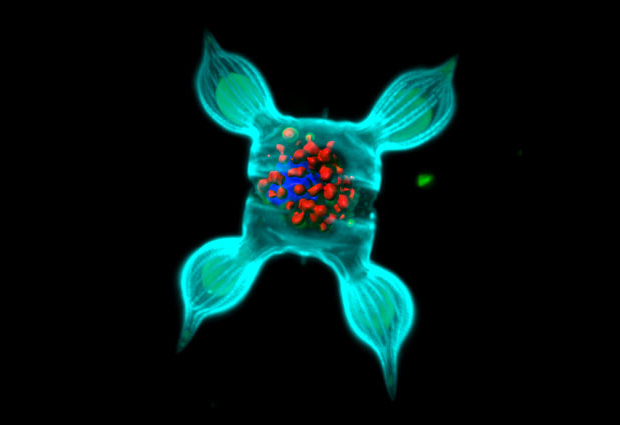
Marine mysteries
Among researchers who study the oceans, there’s a commonly voiced refrain: “We know more about space than we do about the Earth’s oceans.”

A variety of endeavours aim to turn the tide, including the TARA Oceans project, the Sars International Centre for Molecular Marine Biology, and the upcoming EMBO|EMBL Symposium: A New Age of Discovery for Aquatic Microeukaryotes. We asked scientists involved in these projects to share what they’d most like to know about this salty world.
What is the one marine mystery you would most like to see solved?
What diatoms do
“I would like to know what diatoms really do in the ocean. Diatoms are photosynthetic microscopic organisms that are present in pretty much all aquatic environments wherever there is sufficient light for photosynthesis. They have beautiful cell walls made of glass, and different species have different shapes. There are a lot of things in the textbooks about diatoms. We claim that they carry out as much photosynthesis as rainforests – about 20% of the global total! We claim that they are really important for removing CO2 from the atmosphere and sequestering it in the ocean for long periods of time. We claim that they grow very fast when conditions are favourable, and can survive for long periods in harsh conditions. But most of this is based on quite fragmentary information that gets extrapolated into global scenarios. So I’d like to rigorously address each of these issues and get a more accurate understanding of the role of diatoms in our ocean and to compare it with the other organisms that share their planktonic world.”
Chris Bowler, organiser of EMBO | EMBL Symposium: A New Age of Discovery for Aquatic Microeukaryotes and leader of one of TARA Oceans’ research teams
The big questions
“What strikes me most is how much we still don’t know. Based on the initial results of the Tara Oceans expedition, we now have better estimates of how many different microscopic species there are in the World’s oceans, and how many and what kind of genes they encode. We also have a clearer idea of which environmental factors drive the composition of the communities these organisms form, and of who interacts with whom – and to some extent how – within those communities. However, we still need to put all this information into the context of some big questions that remain unsolved: How much carbon will the oceans absorb in the future and how will this affect ocean biodiversity and factors like photosynthesis, pH, and dissolved oxygen? Is there a tipping point beyond which the ocean ecosystem cannot cope anymore with the cumulative anthropogenic insult, and will we be able to recognize (and act against) it? As a scientist, I feel very fortunate to be exploring this immense treasure chest of opportunities.”
Shinichi Sunagawa, staff scientist in the Bork group in Heidelberg, involved in TARA Oceans
How life evolved
“I’d like to know how life evolved in the ocean. What did the first animals look like? What did the first central nervous system look like? And how did we get from that to a human brain capable of asking these questions? Until physicists present us with a time machine, we can’t go back in time to see, but we can look for clues in what lives in the ocean today. We can look at marine organisms that we believe are similar to the animals that lived in the ocean millions of years ago, when the first nervous systems were evolving. By doing so, we have recently found hints that the first vertebrate skeleton may actually have evolved from muscle, and that melatonin – the hormone behind jet-lag – has probably been governing animal’s daily rhythms for hundreds of millions of years, and first controlled the daily upwards swimming of marine larvae I’d like to keep diving deeper into these questions, using the sea as a window into our distant past.”
Detlev Arendt, group leader at EMBL Heidelberg and in the Sars International Centre for Molecular Marine Biology


